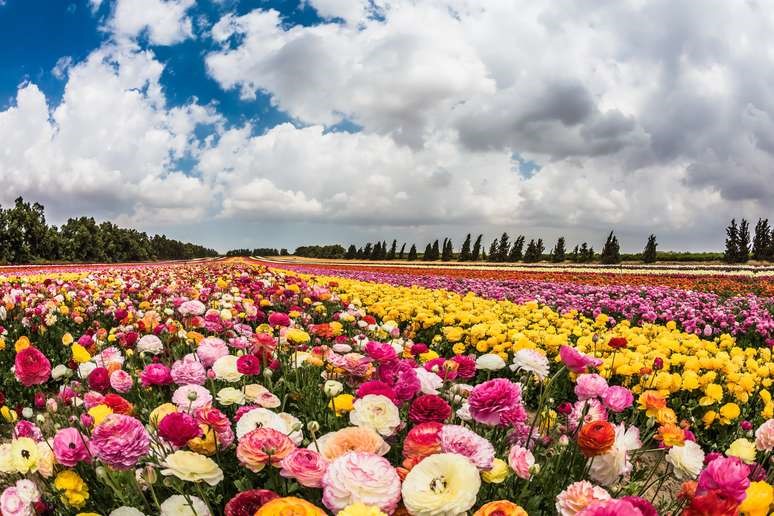
Flowers have long held a special place in human culture, representing celebration, beauty, and love. Global floriculture production is growing at 10% per year. India, a land with diverse traditions and festivities, has long held floriculture as a cherished part of its cultural fabric. The floriculture market in India is growing at a CAGR of 20.1%. Yet, as flower offerings continue to grace temples and religious ceremonies, a vital question emerges: What becomes of these flowers once their purpose is fulfilled? The widespread disposal of floral waste poses significant environmental challenges. However, within this challenge lies an opportunity for small businesses (which are part of Micro, Small, and Medium Enterprises MSME) to emerge as champions of sustainability. This article explores how various small businesses in India are addressing the issue of flower waste sustainability and transforming it into profitable and eco-conscious ventures.
Though nature ensures the biodegradability of flowers, their widespread use in religious rituals can have unintended environmental consequences. Disposing of these sacred blossoms in landfills and water bodies can lead to pollution and harm delicate ecosystems. The flowers that reach the landfills release methane, a greenhouse gas that adversely impacts climate. Used flowers that end up in water bodies (rivers, lake systems) as a part of religious customs become toxic to marine life as they decompose and pollute rivers and other water bodies. A research study has reported that floral waste accounts for 16% of the total river pollutant in India. Every day, countless floral arrangements, estimated to be around 20 tons per day in India, are discarded, leading to significant waste in water, energy, and resources invested in their cultivation, transportation, and storage. Consequently, managing flower waste becomes necessary.
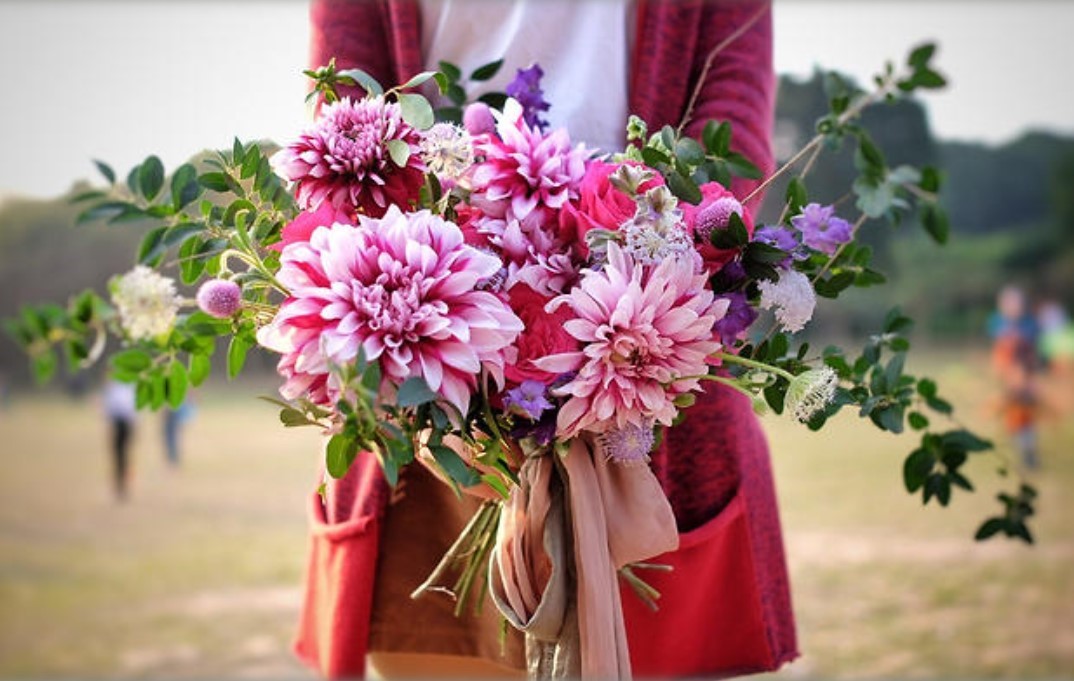
Recognizing the importance of sustainability and environmental stewardship, the concept of sustainable usage of used flowers is emerging as a blooming solution. Enterprising minds have seized the opportunity to reimagine floral waste as a resource, propelling the growth of small businesses. Using the Circular Economy (CE) concept, these firms extract valuable products from discarded flowers, transforming waste into opportunities for economic growth while safeguarding the planet. Many flowers possess vibrant pigments that can be extracted and used as natural dyes. By repurposing used flowers in this manner, we reduce the need for synthetic dyes, which often come with harmful environmental consequences during manufacturing and disposal. Natural dyes and vibrant textiles emerge as marigolds, hibiscus, and roses find new purpose in handcrafted fabrics.
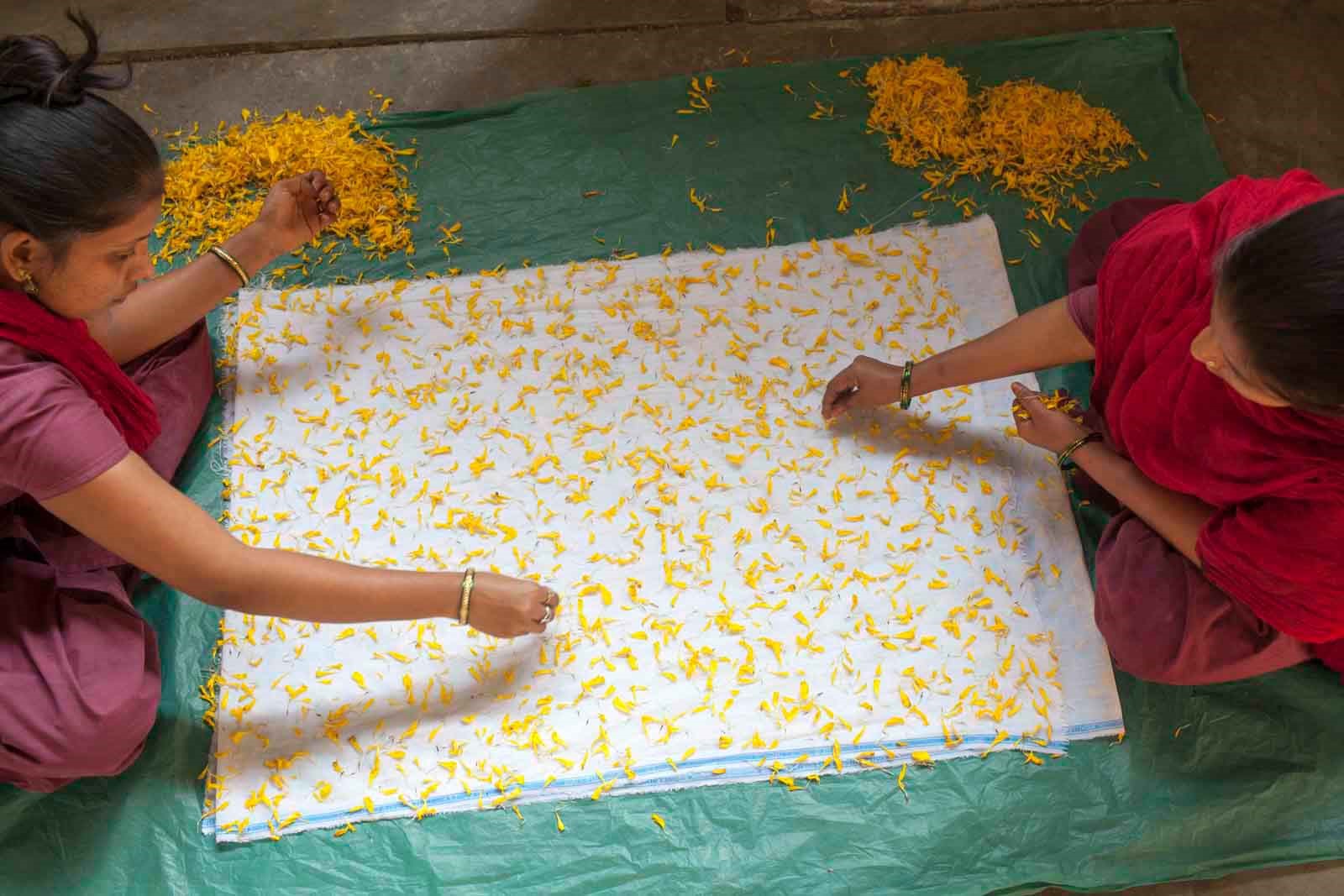
M/s Adiv Pure Nature Private Limited reimagines floral waste from Mumbai’s Siddhivinayak temple, transforming it into exquisite natural dyes and vibrant textiles. M/s MATR has teamed up with the sustainable Australian design brand “Because of Nature” for a venture titled “The Happy Hands Project.”
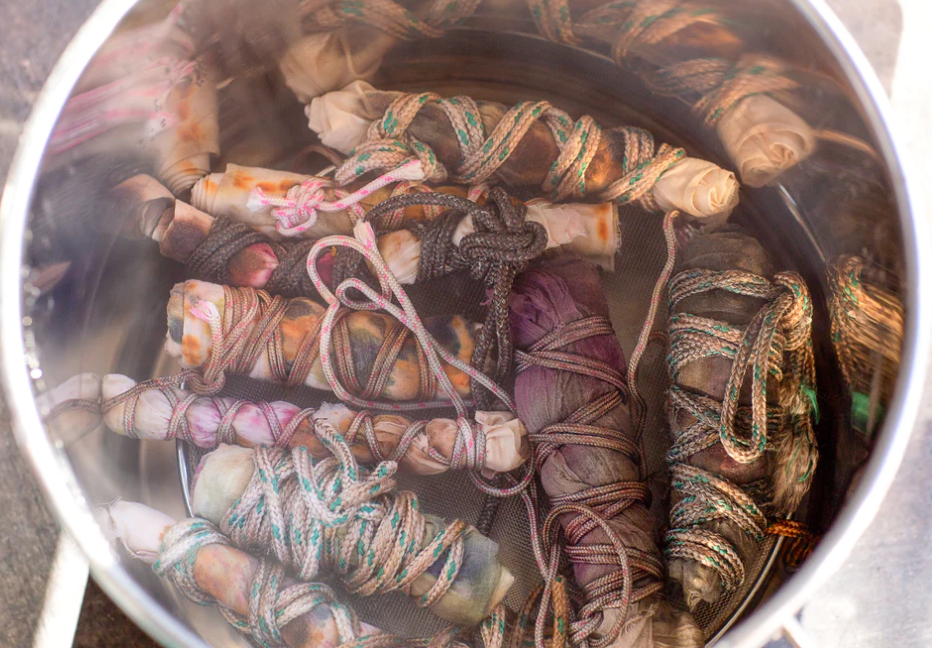
This project employs marginalized women to convert flower waste into natural dyes for Khadi garments. Every day, women collect floral waste from the Mahabodhi temple in Bodh Gaya, sort by variety, and dry them. The dried flowers are then manually powdered, boiled, and used to dye the fabric. Phool Co aims to protect the Ganges from turning into a flower drain. This is done by upcycling the floral waste. They came up with curating incense sticks made from upcycled floral waste. Their process includes preparing dough from waste flowers and, thereafter, curating incense. Their “Green Wave” project separates, dries, and powders the collected floral waste to produce Nirmalya incense sticks. In addition, Green Wave intends to make colour dyes and powdered colours for Holi, fragrances paper, and mosquito repellent in the future. They recycle almost 300kg of floral waste and have provided jobs to about 50-60 girls from the slums of Mumbai and Kanpur.
Another usage is the making of potpourri; drying used flowers can preserve their beauty and fragrance, allowing them to be repurposed into potpourri or sachets. These can naturally freshen up spaces, closets, or drawers, replacing chemical-laden air fresheners. Flowers are organic matter rich in nutrients, making them an excellent addition to compost piles. Composting not only reduces waste but also generates nutrient-rich soil that can be used to cultivate new plants, closing the ecological loop. A non-profit organization “Angelique Foundation” collaborated with the Government and came up with the idea of converting floral waste to manure. This process includes separating the flowers with the use of machines. Around 10kg of sawdust is added to 200kg of floral waste to dispense with moisture and create the intensity fundamental in the usually natural cycle. All these remarkable creations epitomize the power of CE’s reuse, recycling, and remanufacturing.
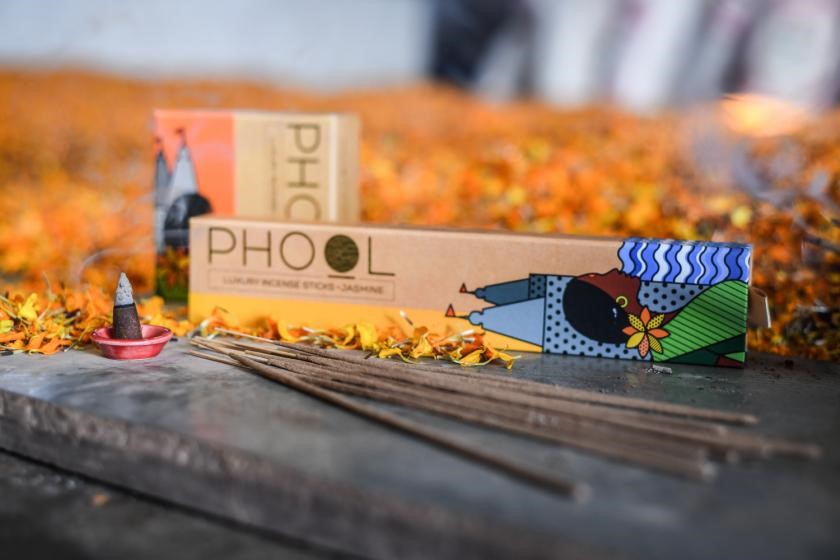
Within this fledgling landscape of sustainability, some remarkable success stories illuminate the path. However, despite their noble pursuits, these
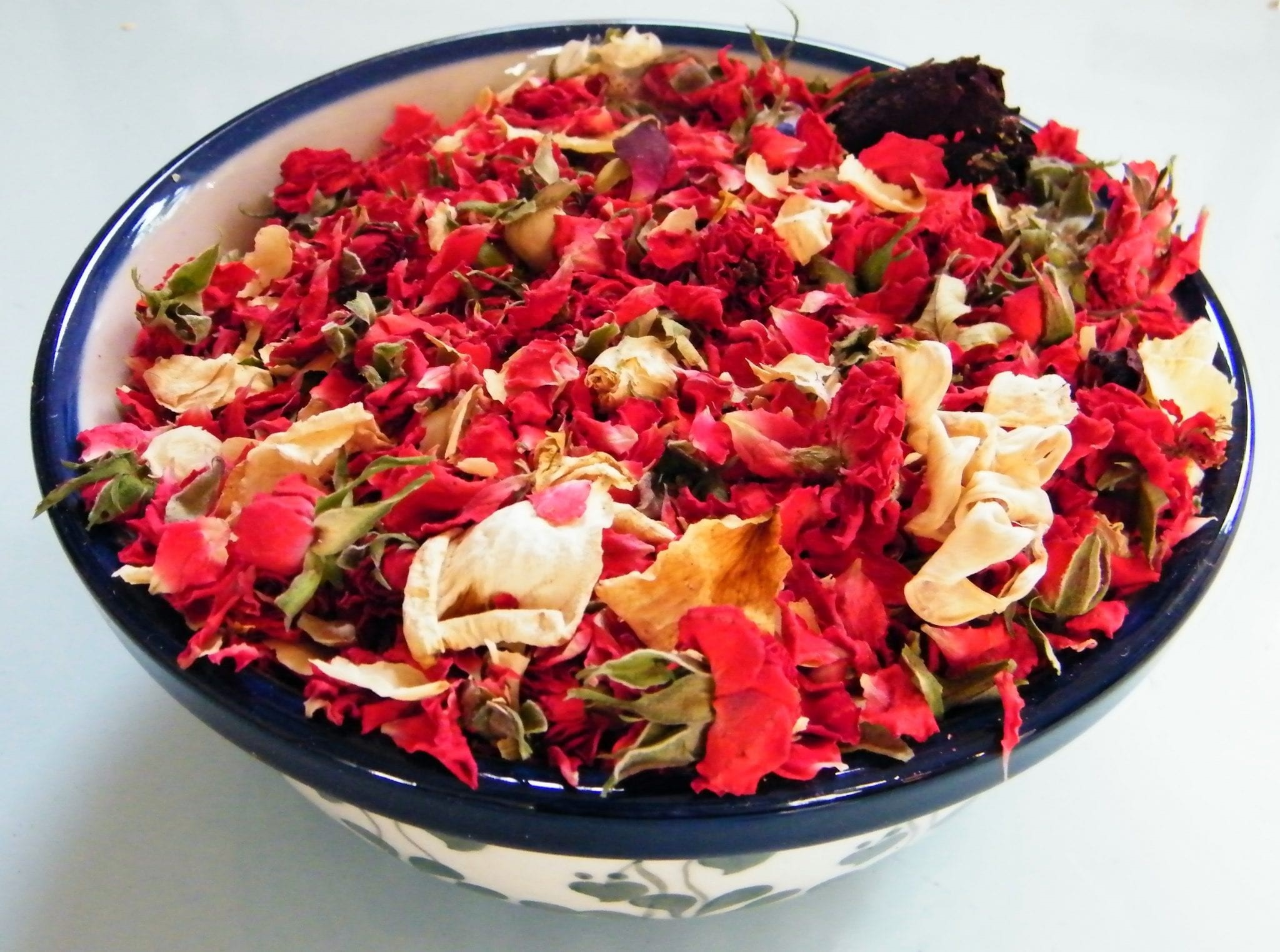
enterprises face challenges on their journey toward sustainability. Marketing and selling these products are one of the biggest challenges, as these products could be marginally expensive because of the natural ingredients used. Another challenge is the supply-chain logistic issues. One approach is implementing better logistics and transportation practices to minimize the floral industry’s carbon footprint.
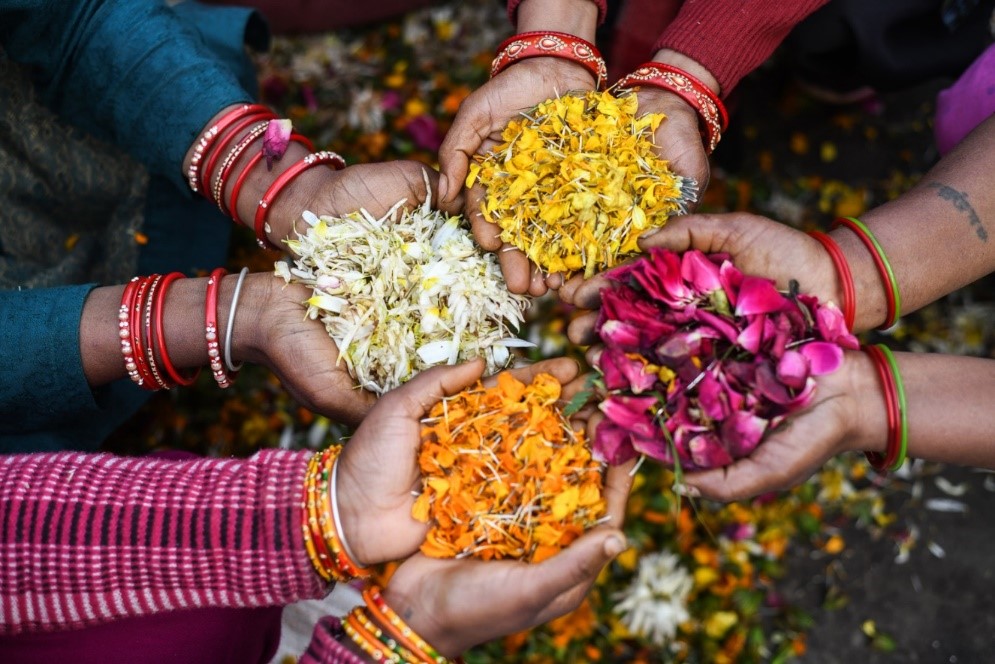
Despite their challenges, small businesses in India spearhead sustainability efforts by transforming floral waste into valuable products. Raising awareness and educating individuals about the potential benefits and creative possibilities is crucial to promote the sustainable usage of used flowers. Florists, event planners, and gardening communities can play a significant role in advocating for sustainable practices. Additionally, initiatives can be undertaken to teach people about composting, natural dyeing, and other repurposing techniques of CE, empowering them to contribute to a greener future. By embracing these practices, we pave the way for a blooming future where sustainability and floral beauty coexist harmoniously. These innovative ventures not only contribute to environmental conservation but also create self-employment opportunities, demonstrating the remarkable impact of sustainable small businesses in India’s quest for a greener future.
Authors:

